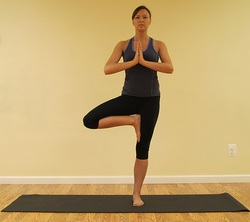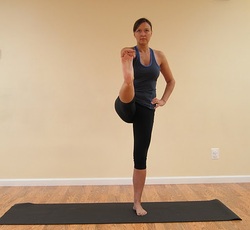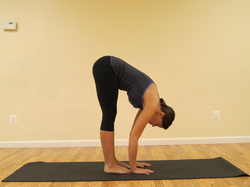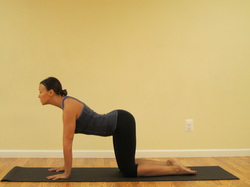
Try out these modifications for better balance when practicing tree.
Tree pose with toes on floor
From a standing position, pick up the right foot and place toes on the floor. Turn the right knee out to the right side. Keep gaze focused on a single point. Repeat pose on left side.
Tree pose with foot on ankle
Once you become comfortable with this initial modification, try placing the sole of the right foot on the left ankle. Turn the right knee out to the right side. Keep gaze focused on a single point. Repeat pose on left side.
Tree pose with foot on calf
Once you have mastered the tree pose with the foot balanced on the ankle, the next step is to balance the sole of the right foot on the side of the left calf muscle. Repeat pose on left side. Caution: Do not rest foot on the side of the knee.
The arm position can also be modified in any of these tree poses to make balancing easier. Arms can be extended out to the side for optimal balance. Later, try practicing the tree pose with hands placed in a prayer position (anjali mudra) in front of the heart center or arms extended overhead.
Follow us on Facebook and Twitter. For yoga in Dunellen, NJ or yoga in Piscataway, NJ and yoga in other Central New Jersey areas, get in touch with me at Yoga Destiny.




